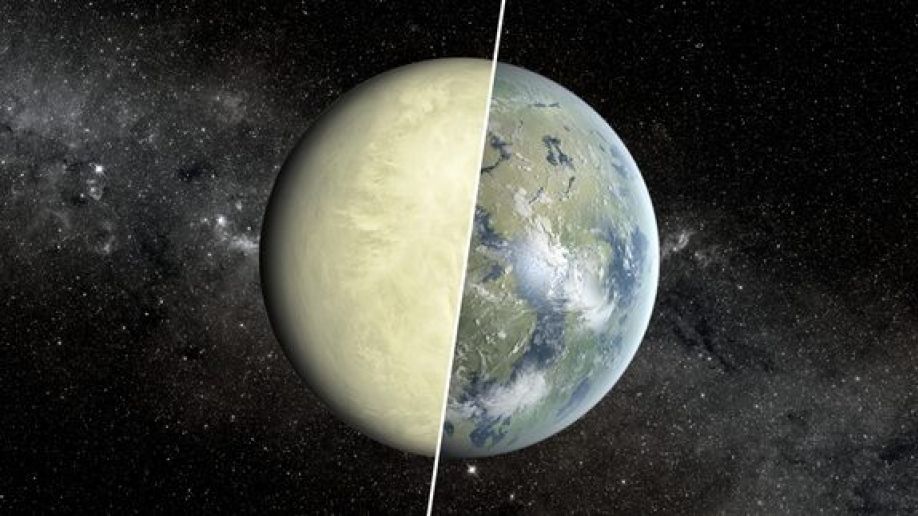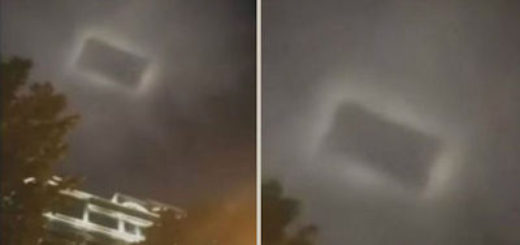‘Venus Zone’ could aid search for Earth-like alien worlds

Despite being about the same size, Earth (represented by the right half of this image) and Venus (the left half), have
vastly different temperatures and other surface conditions. (NASA/JPL-Caltech/Ames)
Exoplanet hunters have just made it easier to identify alien Venuses, in the hopes that doing so will lead to the discovery of more alien Earths.
A team of researchers has delineated the “Venus Zone,” the range of distances from a host star where planets are likely to resemble Earth’s similarly sized sister world, which has been rendered unlivably hot due to a runaway greenhouse effect.
The new study should help scientists get a better handle on how many of the rocky planets spotted by NASA’s prolific Kepler space telescope are truly Earth-like, team members said. [Gallery: A World of Kepler Planets]
“The Earth is Dr. Jekyll, and Venus is Mr. Hyde, and you can’t distinguish between the two based only on size,” lead author Stephen Kane, of San Francisco State University, said in a statement. “So the question then is, how do you define those differences, and how many ‘Venuses’ is Kepler actually finding?”
The results could also lead to a better understanding of Earth’s history, Kane added.
“We believe the Earth and Venus had similar starts in terms of their atmospheric evolution,” he said. “Something changed at one point, and the obvious difference between the two is proximity to the sun.”
Kane and his team defined the Venus Zone based on solar flux — the amount of stellar energy that orbiting planets receive. The outer edge of the zone is the point at which a runaway greenhouse effect would take hold, with a planet’s temperature soaring thanks to heat-trapping gases in its atmosphere. The inner boundary, meanwhile, is the distance at which stellar radiation would completely strip away a planet’s air.
The thinking is similar to that behind the “habitable zone” — the just-right range of distances from a star at which liquid water, and perhaps life as we know it, may be able to exist.
The dimensions of these astronomical zones vary from star to star, since some stars are hotter than others. In our own solar system, the Venus Zone’s outer boundary lies just inside the orbit of Earth, researchers said.
Future space-based instruments — such as NASA’s $8.8 billion James Webb Space Telescope, scheduled to launch in 2018 — will be able to analyze some exoplanets’ atmospheres, helping scientists refine the Venus Zone concept, researchers said.
“If we find all of these planets in the Venus Zone have a runaway greenhouse-gas effect, then we know that the distance a planet is from its star is a major determining factor. That’s helpful to understanding the history between Venus and Earth,” Kane said.
“This is ultimately about putting our solar system in context,” he added. “We want to know if various aspects of our solar system are rare or common.”
The Kepler spacecraft launched in March 2009 on a mission to determine how commonly Earth-like planets occur around the Milky Way galaxy. To date, Kepler has detected more than 4,200 exoplanet candidates, 978 of which have been confirmed by follow-up observations or analysis. Mission team members think about 90 percent of the candidates will eventually turn out to be the real deal.
The telescope suffered a glitch in May 2013 that ended its original exoplanet hunt, but Kepler has embarked upon a new mission called K2, which calls for it to observe a range of cosmic objects and phenomena.
The new study has been accepted for publication in The Astrophysical Journal Letters



 Creators of mankind
Creators of mankind Description of “Tall white aliens”
Description of “Tall white aliens” Where they came from?
Where they came from? About hostile civilizations
About hostile civilizations The war for the Earth
The war for the Earth “Tall white aliens” about eternal life
“Tall white aliens” about eternal life Video: “Nordic aliens”
Video: “Nordic aliens” Aliens
Aliens Alien encounters
Alien encounters The aliens base
The aliens base UFO
UFO Technology UFO
Technology UFO Underground civilization
Underground civilization Ancient alien artifacts
Ancient alien artifacts Military and UFO
Military and UFO Mysteries and hypotheses
Mysteries and hypotheses Scientific facts
Scientific facts


















